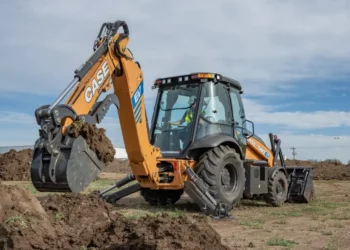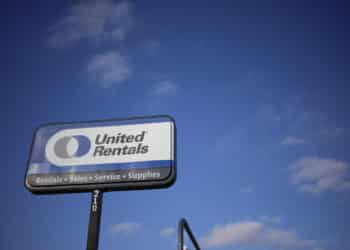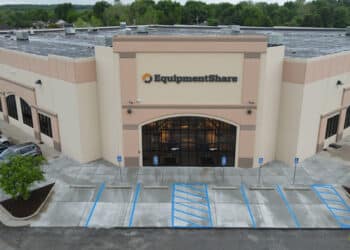OEMs zero in on growing equipment rental market
Rental penetration reached record 57% in Q1
As the equipment rental market continues to grow, manufacturers are adjusting their operations to grow their slice of the pie.
The U.S. construction and general tool rental market is projected to grow 5.2% in 2025 to $87.5 billion, following an 8% increase in 2024, according to the American Rental Association.
The rent-to-rent space
Some OEMs are offering special financing arrangements for dealers that are looking to make rentals a substantial part of their business, Terry Dolan, head of CNH Construction North America, told Equipment Finance News. These arrangements are especially beneficial in the “true rent-to-rent space,” enabling dealers to build capitalized rental fleets for long-term holds, he said.
Rent-to-rent is a model in which dealers lease equipment from a third party — typically an OEM or a lender — and then rent that equipment out to customers without owning it outright.
“Our dealers can typically get really strong supporting rental finance packages, some additional discounts to get price points so that they can get their monthly rental multiple down into what you’re trying to drive for return.”
OEM captives are also offering rent-to-sell financing packages that allow dealers to find pricing sweet spots for certain customers, Dolan said.
“Dealers often do rent-to-sell, where they’ll put units into a rental fleet with the idea of renting it out for two to six months to a number of different customers to create different price points.”
— Terry Dolan, head of CNH Construction North America
“So, they have one machine for $101,000, one for $80,000 and one for $70,000, and all have warranty on them, and it can help them reach that customer, as far as the capital investment they want to make,” he said.
To compete or join forces?
Rental penetration for U.S. construction and industrial hit a record 57% in the first quarter, according to equipment market research firm EquipmentWatch. Industry titans United Rentals and Herc Rentals reported record revenue in the first quarter and in 2024.
As rental demand increases, OEMs must decide whether they want to compete or form partnerships in the market, Josh Nickell, chief executive at Atlanta-based Northside Tool Rental, told EFN.
“Some of them, like Caterpillar, have looked at it and decided that they want to be a competitor in the market … whereas John Deere is more of a partner, or Takeuchi is more of a partner,” he said.
“So, they have to figure out how they want to handle rental. Do they want to be both a retail and rental company-as-a-manufacturer with their dealers? Or do they want to be a retail company first and support rental companies from there?”
Caterpillar, for one, is encouraging its dealers to “invest more in what they would call their rent-to-rent fleets” to increase market share, Jarrett Harris, director of research at heavy-equipment research firm IronAdvisor Insights, told EFN.
Rental house collaboration
OEMs are also viewing rentals as an effective way to tap into growth markets where construction activity is strong, Northside Tool’s Nickell said. This requires collaboration with rental houses to determine which machines are best for certain jobs, he said, noting that more OEMs are using rental companies’ influence “to get new equipment into a market.”
“In rental, you don’t want a whole lot of bells and whistles. You want a little bit sturdier iron.”
— Josh Nickell, CEO, Northside Tool Rental,
Bobcat, for instance, has used rentals to introduce new electric models, Nickell said. Rental demand is also strong for compact equipment like mini excavators, mini skid steers and micro scissor lifts, and OEMs are taking notice.
“That kind of collaboration happens a lot between a manufacturer and a rental company, or a manufacturer and a dealer,” he said.
Register here for the free Equipment Finance News webinar “Technologies to Advance Your Equipment Financing Business” set for Thursday, July 17, at 11 a.m. ET.









